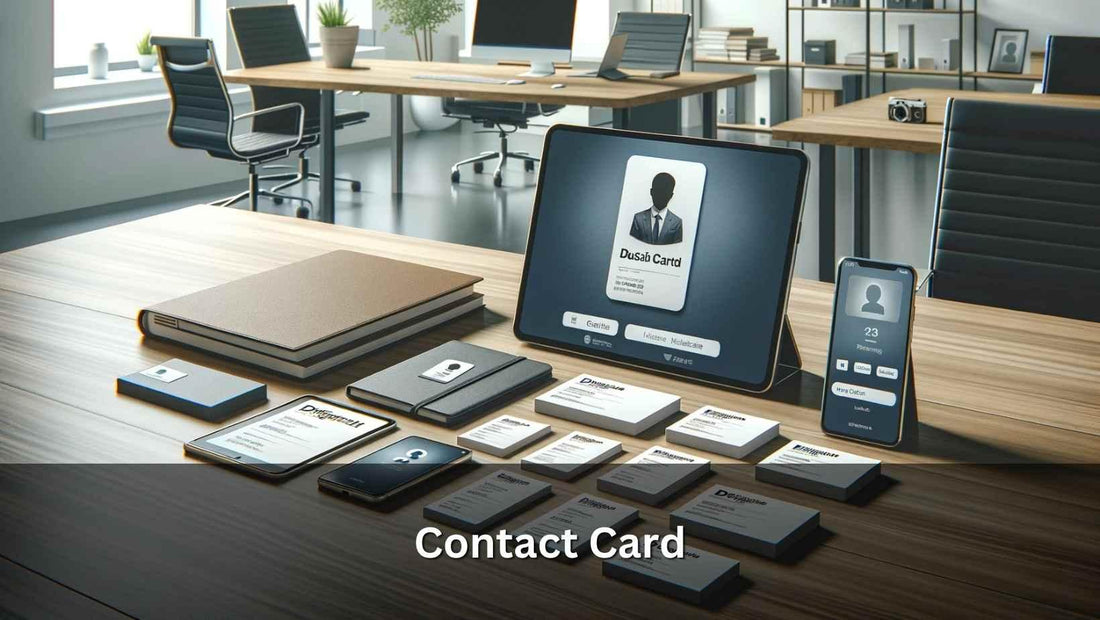Understanding Contact Cards: A Brief Overview:
Contact cards serve as the quintessential nexus between professionals, encapsulating contact information and branding elements in a compact, exchangeable format. Traditionally, these cards have been physical, often crafted from paper or plastic, bearing essential details like name, title, company, phone number, and email address.
They are a staple at networking events, conferences, and meetings, facilitating the timeless ritual of professional introductions and connections. In today’s digitised landscape, however, contact cards are also available in electronic forms—digital files that can be shared via email, messaging apps, or through NFC technology.
This digital transformation enables dynamic content updates and interactive elements, such as links to professional profiles and portfolios, enhancing the card's utility and lifespan beyond the first exchange. Understanding the dual nature of contact cards is pivotal in leveraging their potential to forge and foster professional relationships.

The Resilience of Physical Contact Cards in a Digital World:
In an increasingly virtual world, the tangible nature of physical contact cards endows them with a unique resilience. They are tangible artifacts of an encounter, offering a sensory dimension that digital means cannot replicate—texture, weight, and even the personal touch in handing them over. Such physicality can make a lasting impression, reinforcing the personal brand and the memory of the interaction.
Businesses and individuals alike continue to invest in high-quality, creatively designed physical cards as they represent a personal extension into the professional realm. The act of exchanging these cards can symbolise the start of a meaningful business relationship.
Despite the surge in digital solutions, the physical contact card remains a trusted, universal symbol of professionalism and readiness to engage in business, underscoring its enduring presence in the fabric of networking.

The Rise of Digital Contact Cards: Convenience Meets Connectivity:
Digital contact cards have risen to prominence with the digital revolution, offering a seamless and efficient way to share professional details. These virtual cards can be distributed instantly to anyone across the globe, a feature that resonates with the pace of modern business interactions. They align with the growing preference for digital communication, allowing for the incorporation of multimedia content and direct links to social media profiles, digital portfolios, and websites. This connectivity transforms the contact card from a static piece of information into a dynamic hub of professional presence.
The convenience of updating information in real-time ensures that contacts always have access to the latest details, overcoming the limitations of their physical counterparts. With just a click or tap, digital contact cards can populate contact lists, schedule calls, and even initiate meetings, embodying the fluidity and interconnectivity of today's professional networking landscape. The rise of digital contact cards represents a significant shift towards a more integrated, eco-friendly, and responsive approach to professional exchanges.














